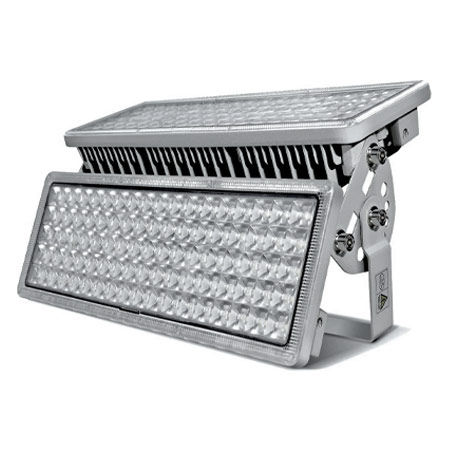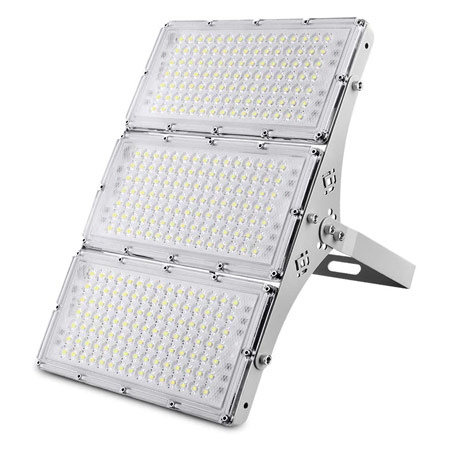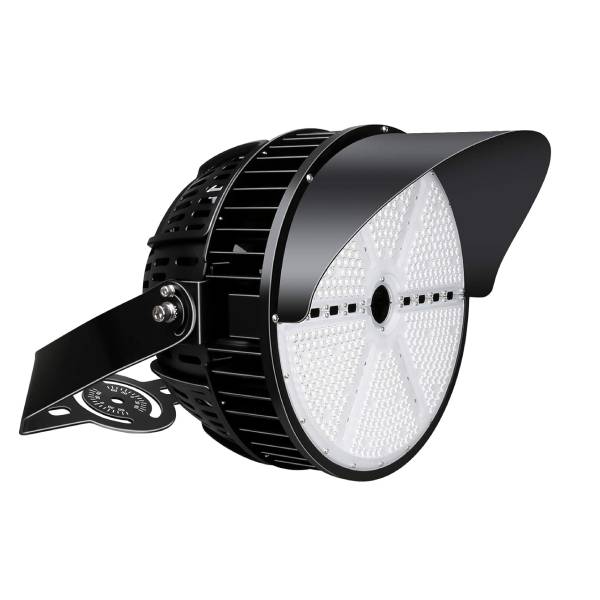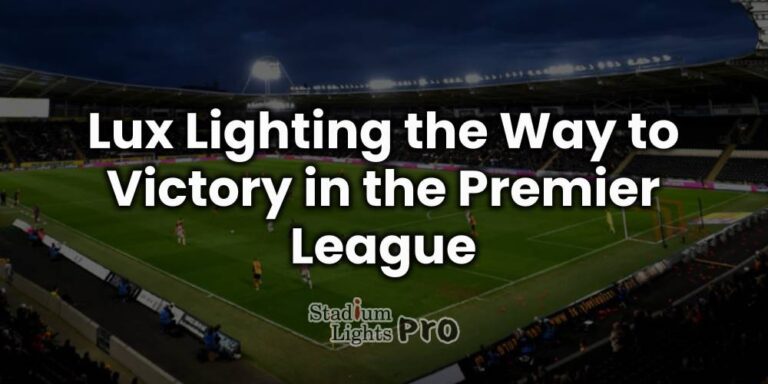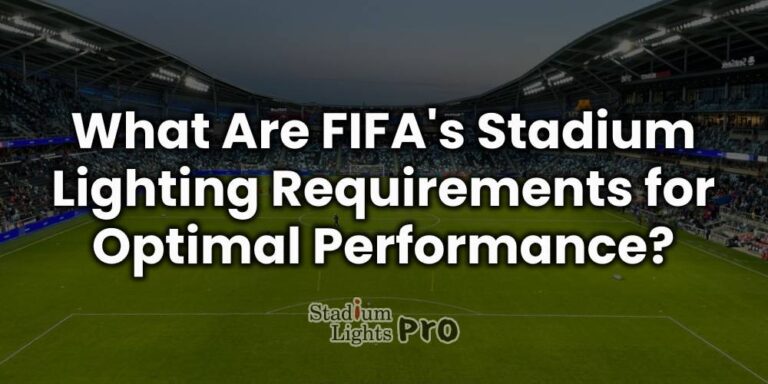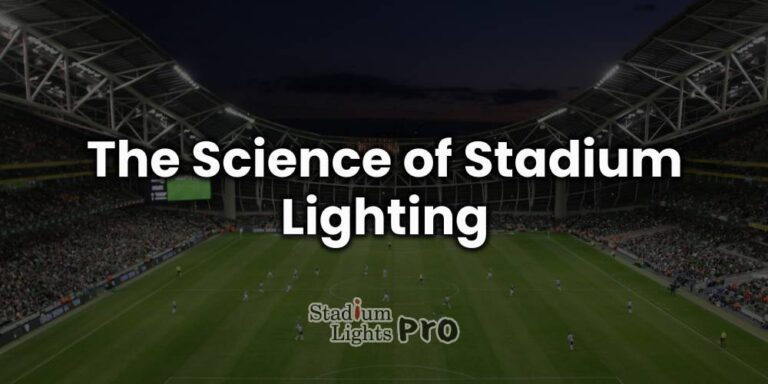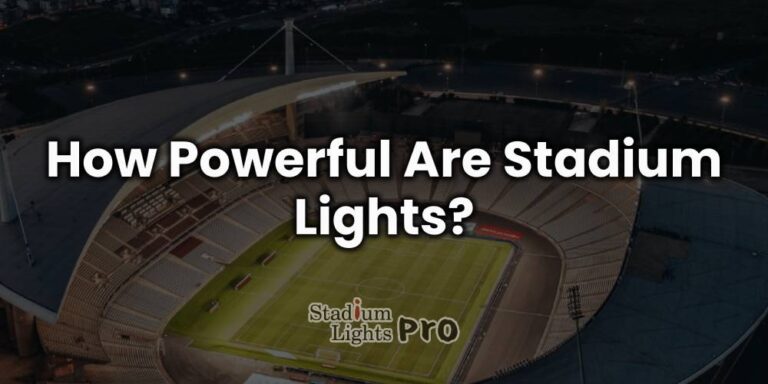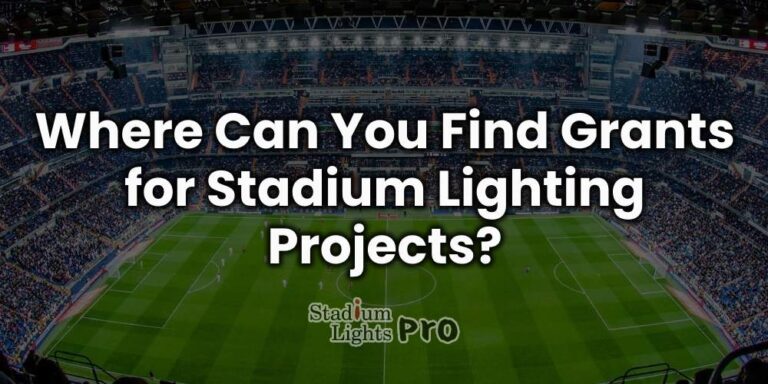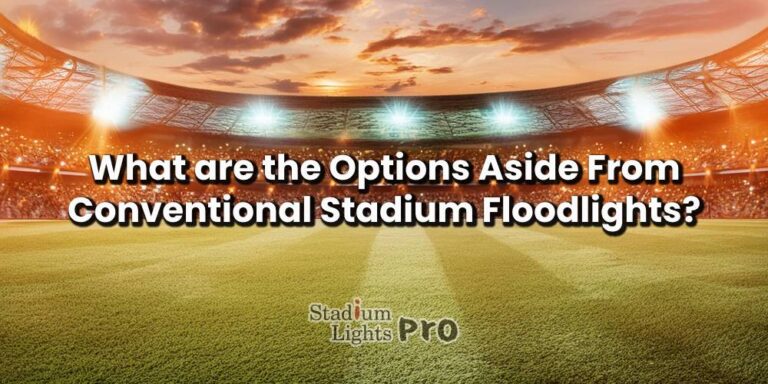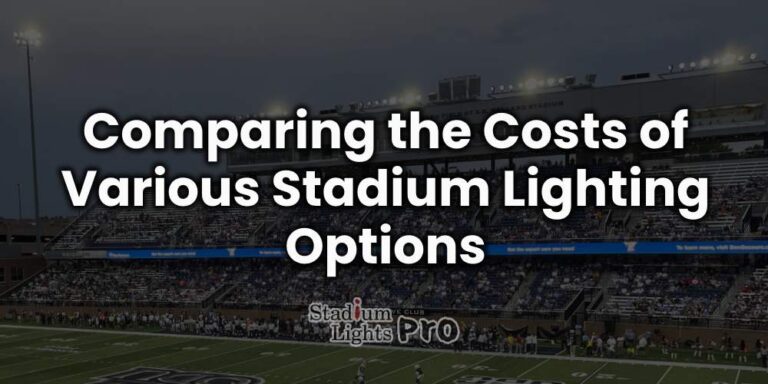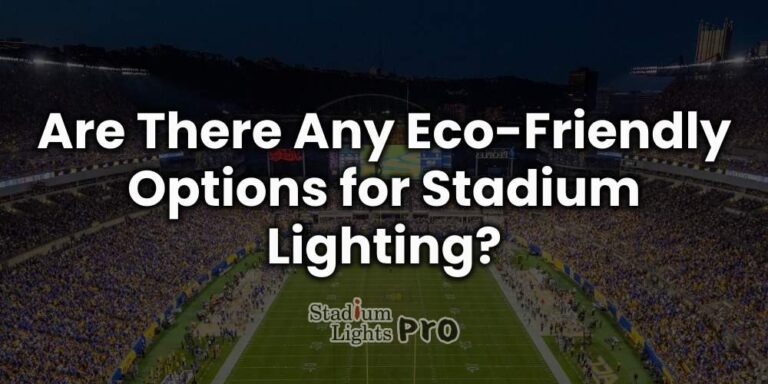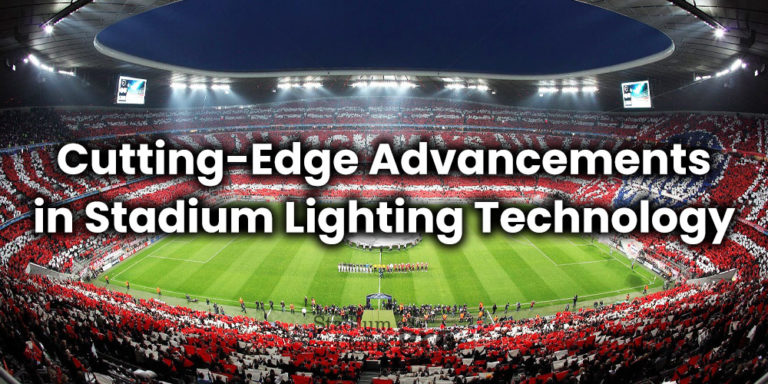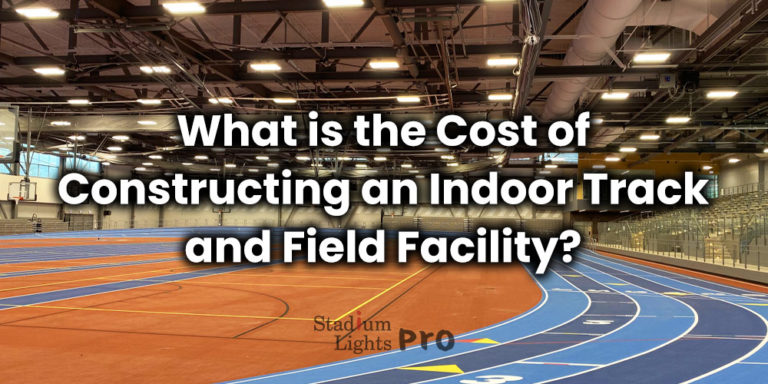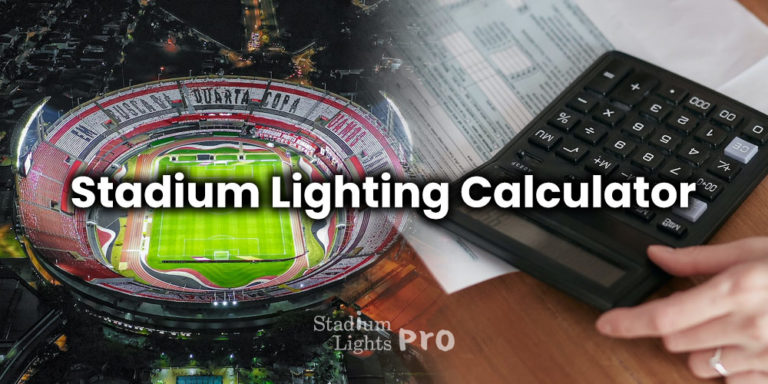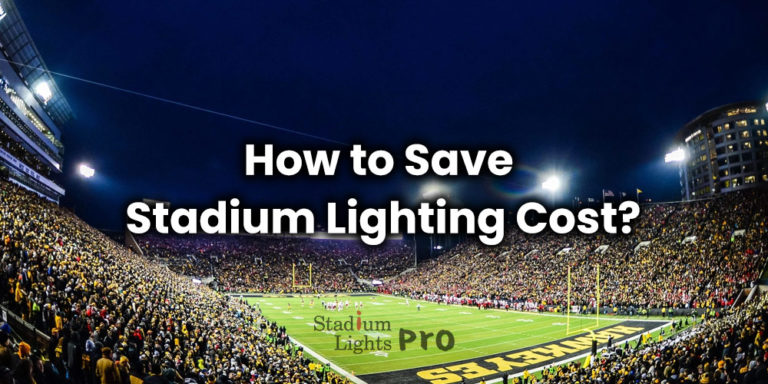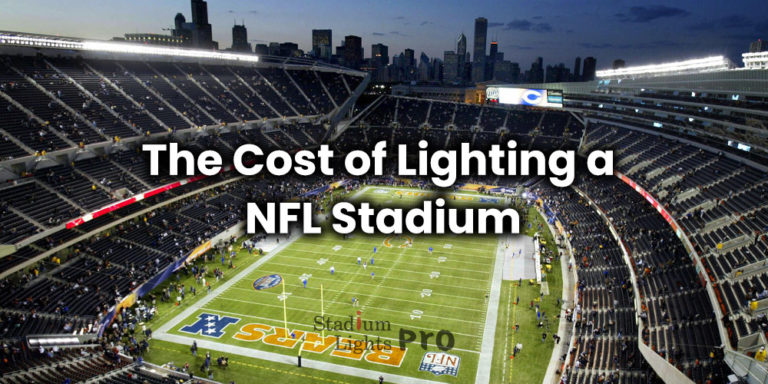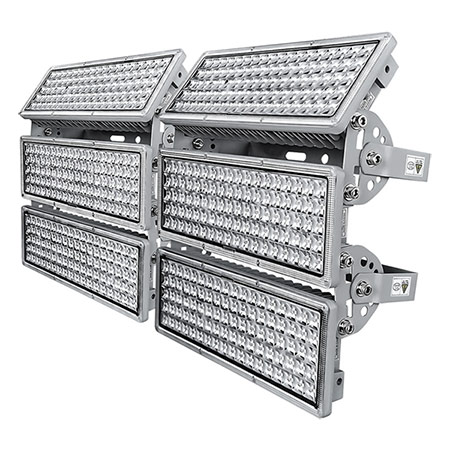
Stadium Lighting
Welcome to our stadium lighting page! If you are in the process of installing new lights or retrofitting your existing stadium lighting system, this is the perfect place for you. We are dedicated to providing valuable information and insights on all aspects of stadium lighting, including the necessary lux and lumen levels, number and wattage of lights, color temperature and light pole height for different types of sports and stadiums.
Whether you are a facility manager, lighting designer, or simply someone looking to improve the lighting at your sports venue, our site has something for you. We strive to be a comprehensive resource for anyone looking to learn more about stadium lighting and how to create the perfect lighting system for their needs.
In addition to providing valuable information and insights on stadium lighting, we also offer free lighting design services to our readers. If you have any questions or would like to take advantage of our free design services, please don’t hesitate to contact us. We would be happy to help you create the perfect lighting system for your stadium.
Contact us for a free lighting consultation
Table of Contents
ToggleStadium lighting frequently asked questions
What is stadium lighting used for?
Stadium lighting is used to illuminate sporting events, concerts, and other large events that take place in outdoor stadiums. The lighting is designed to provide sufficient illumination for the athletes or performers to see and be seen, as well as to enhance the overall viewing experience for the audience.
How is stadium lighting installed?
Stadium lighting is typically installed by a team of professionals who specialize in lighting installation. The process usually involves the installation of poles or towers that support the lighting fixtures, as well as the wiring and control systems needed to operate the lights.
In some cases, the lighting may be integrated into the design of the stadium itself, while in other cases it may be added as an afterthought.
What are the different types of stadium lighting?
There are several different types of stadium lighting, including floodlights, spotlights, and LED lighting. Floodlights are typically used to provide general illumination for the entire playing field or stage, while spotlights are used to highlight specific areas or individuals. LED lighting is becoming increasingly popular due to its energy efficiency and long lifespan.
How do you control stadium lighting?
Stadium lighting is typically controlled using a central control system, which allows the operator to turn the lights on and off, adjust the intensity, and change the color of the lighting as needed. The control system may be manually operated or automated, depending on the needs of the event.
How much does it cost to install stadium lighting?
The cost of installing stadium lighting varies depending on the size of the stadium, the type of lighting used, and the complexity of the installation. In general, the cost of installing stadium lighting can range from $10,000 to $100,000.
What are the benefits of using LED lighting in stadiums?
LED lighting offers several benefits in stadium applications, including:
Energy efficiency
LED lighting uses significantly less energy than traditional lighting technologies, which can help to reduce operating costs and carbon emissions.
Long lifespan
LED lighting has a longer lifespan than traditional lighting technologies, which means it needs to be replaced less frequently. This can help to reduce maintenance costs and downtime.
Improved visibility
LED lighting can provide a higher quality of light than traditional technologies, which can improve visibility for athletes and audience members.
Customization
LED lighting can be easily customized to create different color schemes and lighting effects, which can enhance the overall experience of the event.
Are there any safety concerns with stadium lighting?
As with any large-scale lighting installation, there are some safety concerns to consider with stadium lighting. These include the risk of electric shock and the risk of injury from falling objects, such as light fixtures or poles.
It is essential for the lighting installation to be designed and installed according to proper safety guidelines and for regular maintenance to be performed to ensure that the lighting system is in good working order.
Introduction to stadium lighting
Definition of stadium lighting
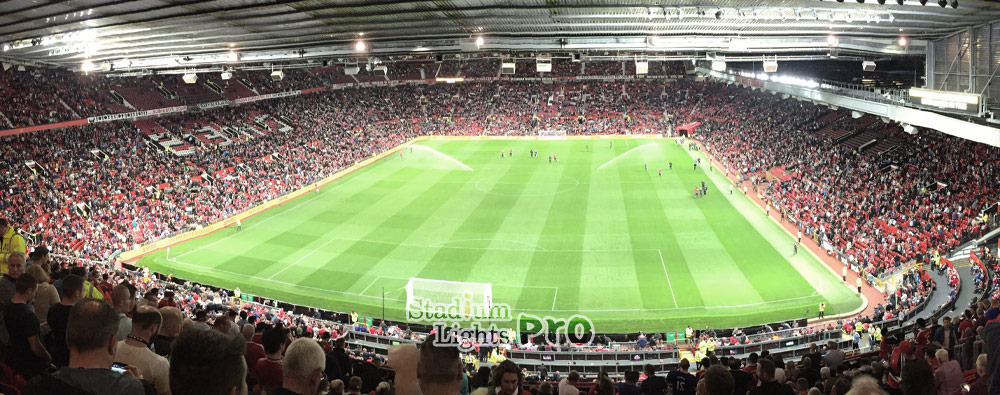
Stadium lighting refers to the lighting systems installed in sports stadiums and arenas for the purpose of illuminating the playing field or court and surrounding areas. Stadium lighting is typically designed to provide sufficient lighting levels for players, coaches, officials, and spectators to see the game clearly and safely.
The lighting may also be used for television broadcasts and other media coverage of the event. Stadium lighting systems are typically made up of multiple light fixtures that are mounted on poles or other structures around the perimeter of the playing field or court.
The fixtures may be equipped with traditional incandescent bulbs, fluorescent lamps, or more recently, LED lights. Stadium lighting is typically designed to be energy-efficient and provide uniform illumination across the playing surface.
Importance of proper lighting in sporting events
Proper lighting is essential for the safety and enjoyment of sporting events. In order for players to see the ball or puck and navigate the playing surface, the lighting must be bright enough and evenly distributed. Poor lighting can lead to accidents and injuries for players and can also affect their performance. In addition, proper lighting is necessary for the officials to see and make accurate calls, as well as for spectators to see the action and follow the game.
Television broadcasts often rely on high-quality lighting to capture the action and provide a clear and visually appealing experience for viewers. In addition, proper lighting can enhance the overall atmosphere and atmosphere of the event, making it more enjoyable for attendees.
Historical background of stadium lighting
The use of lighting in sports stadiums can be traced back to the early 20th century, when the first floodlights were installed in major sports stadiums. These early floodlights were large, bulky, and energy-inefficient, and they were primarily used for night games in football and baseball.
As lighting technology improved, stadium lighting systems became more sophisticated and energy-efficient. In the 1950s, metal halide lamps were introduced, which provided brighter and more efficient lighting. In the 1980s, the use of LED lights in stadium lighting began to gain popularity due to their energy efficiency and long lifespan. Today, many sports stadiums use LED lights or hybrid lighting systems that combine traditional floodlights with LED lighting.
In recent years, there has been a focus on sustainability and energy efficiency in stadium lighting design, with many stadiums implementing LED lighting systems and other energy-saving measures to reduce their carbon footprint. There have also been efforts to reduce light pollution and minimize the impact of stadium lighting on the environment and local communities.
Overview of the different types of sporting events that require stadium lighting
Stadium lighting is used in a variety of sporting events, including:
Football
Football is played in stadiums that range in size from small high school and college stadiums to large professional stadiums. Lighting is essential for both day and night games, as it allows players and officials to see the field clearly and safely.
Baseball
Baseball games are typically played in outdoor stadiums, and lighting is essential for evening games and for media coverage.
Soccer
Soccer is played in both outdoor and indoor stadiums, and lighting is essential for evening games and for television broadcasts.
Basketball
Basketball is played in both indoor and outdoor arenas, and lighting is essential for evening games and for media coverage.
Hockey
Hockey games are typically played in indoor arenas, and lighting is essential for evening games and for media coverage.
Tennis
Tennis is played in both indoor and outdoor stadiums, and lighting is necessary for evening matches and for media coverage.
Golf
Golf courses may use lighting for evening events and tournaments.
In addition to these major sports, stadium lighting is also used in other sporting events such as track and field, motocross, and rodeos.
Types of stadium lighting
Traditional floodlights
Traditional floodlights, also known as incandescent floodlights, are a type of lighting fixture that uses incandescent bulbs to produce light. They are often used in stadium lighting systems to provide illumination for sporting events and other outdoor activities. Traditional floodlights are characterized by their large size and ability to produce a wide beam of light.
One of the main advantages of traditional floodlights is their relatively low cost compared to other types of lighting. However, they are not as energy-efficient as other types of lighting, such as LED lights, and they require more frequent replacement of bulbs. Traditional floodlights also produce heat, which can be a drawback in certain situations.
Despite these limitations, traditional floodlights are still commonly used in stadium lighting systems due to their low cost and wide availability. They are typically mounted on poles or other structures around the perimeter of the playing field or court, and they are aimed at the playing surface to provide uniform illumination.
LED lights
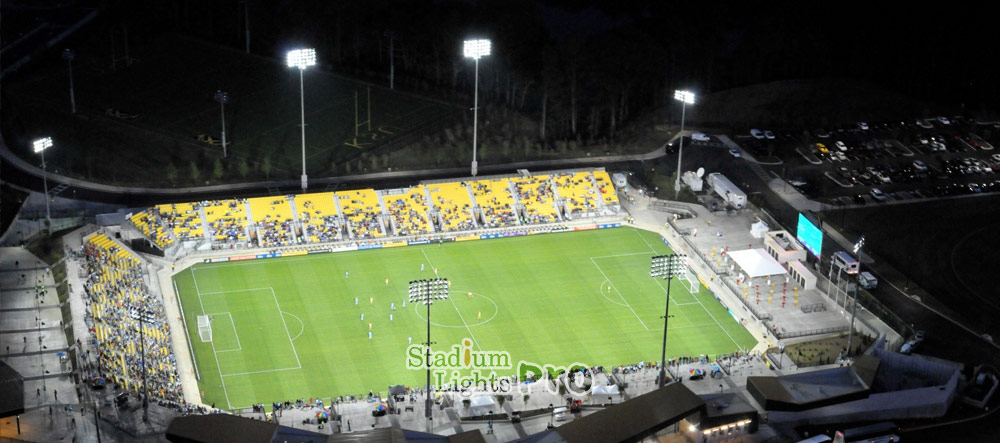
LED lights, or light-emitting diodes, are a type of lighting technology that uses a semiconductor to produce light. They are known for their energy efficiency, long lifespan, and durability, making them a popular choice for stadium lighting systems.
LED lights use significantly less energy than traditional incandescent bulbs and produce less heat, making them more energy-efficient and environmentally friendly. They also have a longer lifespan than traditional bulbs, which can result in lower maintenance and replacement costs. In addition, LED lights are available in a wide range of colors and can be easily dimmed or controlled, making them a versatile option for stadium lighting systems.
One potential drawback of LED lights is their initial cost, which is typically higher than traditional floodlights. However, the long lifespan and energy efficiency of LED lights can result in cost savings over the long term. LED lights are also more compact and lightweight than traditional floodlights, making them easier to install and position.
LED lights are a popular choice for stadium lighting systems due to their energy efficiency, long lifespan, and versatility. They are used in a wide range of sporting events, from football and baseball to basketball and tennis.
Hybrid lighting systems
Hybrid lighting systems are lighting systems that combine traditional floodlights with LED lighting. These systems are designed to provide the benefits of both types of lighting and are often used in stadium lighting systems.
Hybrid lighting systems typically use traditional floodlights as the primary source of illumination, with LED lights used to supplement and enhance the lighting. The LED lights may be used to provide additional illumination in certain areas of the playing field or court, or to provide different colors or effects. Hybrid lighting systems can also be designed to use LED lights as the primary source of illumination, with traditional floodlights used as a backup or supplement.
One of the main advantages of hybrid lighting systems is that they can provide a balance of energy efficiency and cost effectiveness. Traditional floodlights are generally less expensive than LED lights, but they are also less energy-efficient. By using LED lights in combination with traditional floodlights, hybrid lighting systems can provide energy savings without a significant increase in cost. Hybrid lighting systems can also be easily controlled and dimmed, allowing for a range of lighting options and effects.
Hybrid lighting systems are a popular choice for stadium lighting due to their ability to combine the benefits of traditional floodlights and LED lights. They offer a balance of energy efficiency, cost effectiveness, and versatility.
Comparison of different types of lighting in terms of energy efficiency, cost, and maintenance
Here is a comparison of different types of lighting in terms of energy efficiency, cost, and maintenance:
Energy efficiency
LED lights are the most energy-efficient type of lighting, followed by fluorescent lamps and then traditional incandescent bulbs.
Hybrid lighting systems that combine traditional floodlights with LED lights can provide a balance of energy efficiency and cost effectiveness.
Cost
Traditional floodlights are generally the least expensive type of lighting, followed by fluorescent lamps and then LED lights.
While LED lights have a higher initial cost, they have a longer lifespan and lower energy consumption, which can result in cost savings over the long term.
Maintenance
LED lights have the longest lifespan of any type of lighting and require minimal maintenance, making them the most cost-effective option in terms of maintenance.
Traditional floodlights and fluorescent lamps have shorter lifespans and require more frequent replacement of bulbs, which can result in higher maintenance costs.
The best type of lighting for a specific stadium or event will depend on a variety of factors, including the size of the facility, the type of sporting event, and the budget. Careful planning and consideration of energy efficiency, cost, and maintenance can help ensure the optimal performance and cost-effectiveness of the lighting system.
Pros and cons of each type of lighting
Traditional floodlights
Pros
- Low initial cost
- Widely available
- Can provide bright and wide beam of light
Cons
- Not as energy-efficient as other types of lighting
- Shorter lifespan than LED lights and fluorescent lamps
- Produce heat
LED lights
Pros
- Most energy-efficient type of lighting
- Long lifespan
- Available in a wide range of colors and can be easily dimmed or controlled
Compact and lightweight
Cons
- Higher initial cost than traditional floodlights
Fluorescent lamps
Pros
- More energy-efficient than traditional floodlights
- Longer lifespan than traditional floodlights
Cons
- More expensive than traditional floodlights
- Contain mercury, which can be harmful to the environment if not disposed of properly
Hybrid lighting systems
Pros
- Can provide a balance of energy efficiency and cost effectiveness
- Can be easily controlled and dimmed
Cons
- Initial cost may be higher than traditional floodlights
The best type of lighting for a specific stadium or event will depend on a variety of factors, including the size of the facility, the type of sporting event, and the budget. Careful planning and consideration of the pros and cons of each type of lighting can help ensure the optimal performance and cost-effectiveness of the lighting system.
Factors to consider when designing stadium lighting
Illumination levels and uniformity
Illumination levels refer to the amount of light that is produced by the lighting system, and they are typically measured in units called lux or foot-candles. The illumination level should be sufficient to provide clear visibility of the playing surface and surrounding areas, while also minimizing shadows and glare.
Uniformity refers to the evenness of the illumination across the playing surface. We need to ensure that the lighting is evenly distributed across the field or court to minimize shadows and ensure that all players have equal visibility.
In order to achieve the proper illumination levels and uniformity, the lighting system should be carefully planned and designed to take into account the size and layout of the stadium, the type of sporting event, and the specific lighting requirements. The angle and direction of the lighting fixtures, as well as the number and placement of the fixtures, should be carefully considered to ensure optimal illumination levels and uniformity.
Energy efficiency
Lighting systems can consume a significant amount of energy. Energy-efficient lighting can help reduce energy consumption, lower energy costs, and reduce the carbon footprint of the stadium.
There are several ways to increase the energy efficiency of stadium lighting systems, including:
Use LED lights
LED lights are the most energy-efficient type of lighting, using significantly less energy than traditional incandescent bulbs.
Use hybrid lighting systems
Hybrid lighting systems that combine traditional floodlights with LED lights can provide a balance of energy efficiency and cost effectiveness.
Use energy-efficient control systems
The use of energy-efficient control systems, such as occupancy sensors and dimming controls, can help reduce energy consumption by turning off or dimming the lighting when it is not needed.
Use daylight harvesting
Daylight harvesting systems can use natural light to supplement the lighting in the stadium, reducing the need for artificial lighting and saving energy.
By implementing these energy-saving measures, stadium lighting systems can reduce energy consumption, lower energy costs, and reduce their carbon footprint.
Angle and direction of lighting
The angle of the lighting fixtures refers to the angle at which the light is directed towards the playing surface, and the direction of the lighting refers to the orientation of the fixtures relative to the playing surface.
The angle and direction of the lighting should be carefully considered to ensure optimal illumination levels and uniformity. The fixtures should be positioned and aimed to provide the appropriate amount of light on the playing surface and surrounding areas, while minimizing shadows and glare.
In order to achieve the desired illumination levels and uniformity, the angle and direction of the lighting fixtures should be carefully planned and calculated based on the size and layout of the stadium, the type of sporting event, and the specific lighting requirements. Factors such as the height of the fixtures, the distance between the fixtures, and the angle of the fixtures can all affect the angle and direction of the lighting.
Color temperature
Color temperature is a measure of the hue of a light source, and it is typically expressed in degrees Kelvin (K). Light sources with a low color temperature, such as yellow and orange, are considered warm, while light sources with a high color temperature, such as blue and white, are considered cool. The color temperature of the lighting can affect the appearance of the playing surface and the players.
Warm colors, such as yellow and orange, can create a cozy and inviting atmosphere, while cool colors, such as blue and white, can create a more energetic and modern atmosphere. The color temperature of the lighting can also affect the perceived intensity of the light, with cool colors appearing brighter and warmer colors appearing dimmer.
The color temperature can be adjusted by using different types of bulbs or by using color filters or gels.
Control and dimming capabilities
The ability to control and dim the lighting allows for the adjustment of the illumination levels and the creation of different atmospheres. This can be useful for different types of sporting events or to accommodate different media broadcasts.
There are several ways to control and dim the lighting in stadium lighting systems, including:
Manual control
The lighting can be manually controlled using switches or dimmer controls.
Automatic control
The lighting can be automatically controlled using sensors or timers. Occupancy sensors can turn the lighting on and off based on the presence of people in the area, while timers can turn the lighting on and off at predetermined times.
Remote control
The lighting can be controlled remotely using a smartphone app or other remote control device.
DMX control
The lighting can be controlled using DMX (Digital Multiplex) control, which allows for the creation of sophisticated lighting effects and the integration of the lighting with other systems, such as sound and video.
Safety and security considerations
The lighting system should be designed to minimize the risk of accidents and injuries for players, officials, and spectators.
Here are some safety and security considerations for stadium lighting systems:
Positioning of fixtures
The positioning of the lighting fixtures should be carefully planned to minimize the risk of collisions or falls. The fixtures should be positioned out of reach and should not obstruct the view of the playing surface or surrounding areas.
Wind and weather resistance
The lighting fixtures should be designed to withstand wind and other environmental factors, such as rain and snow. This can help prevent accidents and damage to the fixtures.
Emergency lighting
Emergency lighting should be provided in case of power outages or other emergencies. This can help ensure the safety of players, officials, and spectators during the event.
Security lighting
The lighting system should be designed to provide adequate illumination for security purposes, such as surveillance and crowd control.
Environmental impact of different types of lighting
Aesthetics and visual appeal
Environmental impact
- LED lights are generally the most environmentally friendly type of lighting, as they use less energy and produce less heat than traditional floodlights.
- Hybrid lighting systems that combine traditional floodlights with LED lights can provide a balance of energy efficiency and cost effectiveness.
- Fluorescent lamps contain mercury, which can be harmful to the environment if not disposed of properly.
Aesthetics and visual appeal
- The appearance of the lighting fixtures and the color temperature of the lighting can affect the aesthetics and visual appeal of the stadium.
- Warm colors, such as yellow and orange, can create a cozy and inviting atmosphere, while cool colors, such as blue and white, can create a more energetic and modern atmosphere.
- The design and positioning of the lighting fixtures can also affect the aesthetics and visual appeal of the stadium.
LED lights are generally the most environmentally friendly and energy-efficient option, while the color temperature and design of the lighting can affect the aesthetics and visual appeal of the stadium.
Installation process
Regular maintenance and cleaning
Perform regular inspections
Regular inspections of the lighting fixtures can help identify any problems or issues that need to be addressed. This can include checking for loose or damaged fixtures, burned out bulbs, and other issues.
Clean the fixtures
Dirt and debris can accumulate on the fixtures over time, which can affect the performance of the lighting. Regularly cleaning the fixtures using a soft, dry cloth or a low-pressure air blower can help remove dirt and debris and improve the performance of the lighting.
Replace bulbs and other components
Bulbs and other components, such as ballasts and transformers, should be replaced as needed to ensure the optimal performance of the lighting.
Follow manufacturer’s recommendations
By performing regular inspections, cleaning the fixtures, replacing bulbs and other components as needed, and following the manufacturer’s recommendations, it is possible to keep the lighting system in good working condition and reduce maintenance costs over time.
Upgrade and replacement costs
The cost of upgrading or replacing stadium lighting systems will depend on a variety of factors, including the size and layout of the stadium, the type of lighting system being replaced, and the type of lighting system being installed. Here are some factors to consider when estimating the cost of upgrading or replacing a stadium lighting system:
Size of the stadium
The size of the stadium will affect the number of fixtures and the overall cost of the lighting system. Larger stadiums will require more fixtures, which will increase the cost of the lighting system.
Type of lighting system being replaced
The cost of upgrading or replacing the lighting system will depend on the type of lighting system being replaced. Traditional floodlights are generally the least expensive type of lighting, followed by fluorescent lamps and then LED lights.
Type of lighting system being installed
The cost of the lighting system will also depend on the type of lighting system being installed. LED lights are generally the most expensive type of lighting, followed by fluorescent lamps and then traditional floodlights. However, LED lights have a longer lifespan and lower energy consumption, which can result in cost savings over the long term.
Installation and labor costs
The cost of upgrading or replacing the lighting system will also include the cost of installation and labor.
The cost of upgrading or replacing a stadium lighting system will depend on a variety of factors, including the size and layout of the stadium, the type of lighting system being replaced, and the type of lighting system being installed.
Environmental and social impact of stadium lighting
Light pollution and its effects on the environment and local communities
Light pollution is the excess or misdirected artificial light that can interfere with the natural lighting of the night sky and negatively impact the environment and local communities. It can be caused by outdoor lighting, such as streetlights and stadium lighting, as well as by indoor lighting that is visible from outside.
Light pollution has several negative effects on the environment and local communities, including:
Disrupting the natural lighting of the night sky
Light pollution can interfere with the natural lighting of the night sky, making it difficult to see stars and other celestial objects. This can have an impact on the behavior and migration patterns of nocturnal animals, as well as on the pollination of plants.
Affecting the sleep patterns of humans and animals
Excessive light at night can disrupt the natural sleep patterns of humans and animals, leading to sleep disorders and other health problems.
Wasting energy
Light pollution can result in the unnecessary use of energy, which can contribute to climate change and other environmental problems.
Decreasing the visibility of the night sky
Light pollution can decrease the visibility of the night sky, which can be a problem for astronomers and other scientists who rely on the night sky for their research.
Light pollution is a serious problem that can have negative effects on the environment and local communities. We need to minimize light pollution by using outdoor lighting wisely and directing it downwards, rather than upwards, to minimize its impact on the night sky.
Carbon footprint of different types of lighting
The carbon footprint of different types of lighting refers to the amount of carbon dioxide emissions that are produced during the production, use, and disposal of the lighting. Here is a comparison of the carbon footprint of different types of lighting:
LED lights
LED lights are the most energy-efficient type of lighting, and they have the lowest carbon footprint of any type of lighting. This is because they use significantly less energy than traditional incandescent bulbs and fluorescent lamps, and they have a longer lifespan, which reduces the need for replacement and disposal.
Fluorescent lamps
Fluorescent lamps, including compact fluorescent lamps (CFLs) and linear fluorescent lamps, have a lower carbon footprint than traditional incandescent bulbs, as they use less energy and have a longer lifespan. However, they have a higher carbon footprint than LED lights.
Traditional incandescent bulbs
Traditional incandescent bulbs have the highest carbon footprint of any type of lighting, as they use the most energy and have the shortest lifespan.
LED lights have the lowest carbon footprint of any type of lighting, followed by fluorescent lamps and then traditional incandescent bulbs. By choosing energy-efficient lighting, it is possible to reduce the carbon footprint of the lighting system and help mitigate the impacts of climate change.
Strategies for reducing the environmental impact of stadium lighting
There are several strategies that can be used to reduce the environmental impact of stadium lighting, including:
Use energy-efficient lighting
LED lights are the most energy-efficient type of lighting, and they have the lowest carbon footprint of any type of lighting. Using LED lights in stadium lighting systems can help reduce energy consumption and minimize the environmental impact of the lighting.
Direct the lighting downwards
Misdirected lighting can interfere with the natural lighting of the night sky and contribute to light pollution. By directing the lighting downwards, rather than upwards, it is possible to minimize the impact of the lighting on the night sky and reduce the risk of light pollution.
Use motion sensors or timers
Using motion sensors or timers to control the lighting can help reduce energy consumption and minimize the environmental impact of the lighting. Occupancy sensors can turn the lighting on and off based on the presence of people in the area, while timers can turn the lighting on and off at predetermined times.
Use hybrid lighting systems
Hybrid lighting systems that combine traditional floodlights with LED lights can provide a balance of energy efficiency and cost effectiveness. These systems can reduce energy consumption and minimize the environmental impact of the lighting.
Consider the lifecycle of the lighting fixtures
The lifecycle of the lighting fixtures, including the production, use, and disposal of the fixtures, can impact the environmental impact of the lighting.
There are several strategies that can be used to reduce the environmental impact of stadium lighting, including using energy-efficient lighting, directing the lighting downwards, using motion sensors or timers, using hybrid lighting systems, and considering the lifecycle of the lighting fixtures. By implementing these strategies, it is possible to minimize the environmental impact of stadium lighting and help protect the environment.
Case studies and examples of successful stadium lighting projects
Examples of stadiums with innovative lighting solutions
There are many examples of stadiums that have implemented innovative lighting solutions to reduce energy consumption, minimize the environmental impact of the lighting, and enhance the visual appeal of the stadium. Here are a few examples:
Mercedes-Benz Stadium
This stadium in Atlanta, Georgia, has a retractable roof and a 360-degree LED halo board that provides energy-efficient lighting for the playing surface and surrounding areas. The LED lighting system uses 50% less energy than traditional incandescent lighting and has a lifespan of 100,000 hours.
Levi’s Stadium
This stadium in Santa Clara, California, has a solar panel array on the roof that provides clean energy for the lighting and other electrical systems in the stadium. The stadium also has LED lighting on the playing surface and in the concourses, which uses 50% less energy than traditional incandescent lighting.
Allianz Arena
This stadium in Munich, Germany, has an innovative lighting system that uses LED technology and a color-changing system to create a dynamic and visually appealing atmosphere. The LED lighting system uses 50% less energy than traditional incandescent lighting and has a lifespan of 100,000 hours.
These are just a few examples of stadiums that have implemented innovative lighting solutions to reduce energy consumption, minimize the environmental impact of the lighting, and enhance the visual appeal of the stadium. There are many other examples of stadiums that have implemented similar solutions to address these and other lighting challenges.
Lessons learned from these projects
There are several lessons that can be learned from the examples of stadiums with innovative lighting solutions:
Energy-efficient lighting
The use of energy-efficient lighting, such as LED lights, can significantly reduce energy consumption and minimize the environmental impact of the lighting.
Renewable energy can be used to power the lighting
The use of renewable energy, such as solar power, can help reduce the environmental impact of the lighting and reduce reliance on fossil fuels.
LED lighting has a long lifespan and low maintenance requirements
LED lighting has a long lifespan and low maintenance requirements, which can result in cost savings over the long term.
Dynamic and visually appealing lighting can enhance the atmosphere of the stadium
The use of dynamic and visually appealing lighting, such as color-changing systems, can enhance the atmosphere of the stadium and create a memorable experience for spectators.
These examples demonstrate the importance of energy-efficient lighting, the benefits of using renewable energy to power the lighting, the long lifespan and low maintenance requirements of LED lighting, and the potential of dynamic and visually appealing lighting to enhance the atmosphere of the stadium. By considering these and other lessons learned from these projects, it is possible to design and implement innovative lighting solutions that meet the specific needs and challenges of a stadium.
Challenges and successes of different stadium lighting projects
There are many challenges and successes that can be associated with different stadium lighting projects. Here are a few examples:
Challenges
Cost
The cost of upgrading or replacing a stadium lighting system can be a significant challenge, particularly for smaller stadiums or those with limited budgets.
Energy consumption
Reducing energy consumption and minimizing the environmental impact of the lighting can be a challenge, particularly in larger stadiums with a high number of fixtures. We need to consider the energy efficiency of the lighting fixtures and to use renewable energy sources, where possible, to help reduce energy consumption.
Maintenance
Maintaining the lighting system can be a challenge, particularly in larger stadiums with a high number of fixtures.
Successes
Energy savings
Upgrading to energy-efficient lighting, such as LED lights, can result in significant energy savings and cost savings over the long term.
Improved visibility and safety
Improving the lighting in a stadium can enhance the visibility and safety of the playing surface and surrounding areas, which can be a success for players, spectators, and event organizers.
Enhanced atmosphere
Implementing dynamic and visually appealing lighting can enhance the atmosphere of the stadium and create a memorable experience for spectators.
Minimized environmental impact
Implementing strategies to minimize the environmental impact of the lighting, such as using renewable energy sources and reducing energy consumption, can be a success for the stadium and the local community.
There are many challenges and successes that can be associated with different stadium lighting projects. By carefully considering the specific needs and challenges of the stadium and implementing appropriate lighting solutions, it is possible to achieve a range of benefits, including energy savings, improved visibility and safety, enhanced atmosphere, and minimized environmental impact.
Future trends in stadium lighting
Emerging technologies and innovations in stadium lighting
There are many emerging technologies and innovations in stadium lighting that are being developed and implemented to address the specific needs and challenges of different stadiums. Here are a few examples:
Smart lighting systems
Smart lighting systems use sensors, controls, and other technologies to optimize the lighting in a stadium in real-time based on various factors, such as the weather, the time of day, and the presence of people in the area. These systems can help reduce energy consumption, improve visibility and safety, and enhance the atmosphere of the stadium.
Wireless lighting control systems
Wireless lighting control systems use wireless technology to control the lighting in a stadium, which can simplify installation and maintenance and reduce the risk of disruptions. These systems can be used to remotely control and monitor the lighting in real-time, which can improve the efficiency and effectiveness of the lighting.
LED lighting with high color rendering index
LED lighting with a high color rendering index (CRI) can provide more accurate and vibrant colors, which can enhance the visual appeal of the stadium and improve the viewing experience for spectators.
Sustainable lighting systems
Sustainable lighting systems use renewable energy sources, such as solar power, to power the lighting in a stadium, which can help reduce the environmental impact of the lighting and reduce reliance on fossil fuels.
There are many emerging technologies and innovations in stadium lighting that are being developed and implemented to address the specific needs and challenges of different stadiums. These technologies and innovations can help improve the efficiency and effectiveness of the lighting, enhance the visual appeal and atmosphere of the stadium, and minimize the environmental impact of the lighting.
Sustainability and energy efficiency in stadium lighting design
Sustainability and energy efficiency help reduce the environmental impact of the lighting and reduce energy consumption. Here are a few ways to incorporate sustainability and energy efficiency into stadium lighting design:
Use energy-efficient lighting
LED lights are the most energy-efficient type of lighting, and they have the lowest carbon footprint of any type of lighting. Using LED lights in stadium lighting systems can help reduce energy consumption and minimize the environmental impact of the lighting.
Consider the lifecycle of the lighting fixtures
The lifecycle of the lighting fixtures, including the production, use, and disposal of the fixtures, can impact the environmental impact of the lighting.
Use renewable energy sources
Using renewable energy sources, such as solar power, to power the lighting in a stadium can help reduce the environmental impact of the lighting and reduce reliance on fossil fuels.
Direct the lighting downwards
Misdirected lighting can interfere with the natural lighting of the night sky and contribute to light pollution. By directing the lighting downwards, rather than upwards, it is possible to minimize the impact of the lighting on the night sky and reduce the risk of light pollution.
Use motion sensors or timers
Using motion sensors or timers to control the lighting can help reduce energy consumption and minimize the environmental impact of the lighting. Occupancy sensors can turn the lighting on and off based on the presence of people in the area, while timers can turn the lighting on and off at predetermined times.
There are many ways to incorporate sustainability and energy efficiency into stadium lighting design, including using energy-efficient lighting, considering the lifecycle of the lighting fixtures, using renewable energy sources, directing the lighting downwards, and using motion sensors or timers. By considering these and other strategies, it is possible to design a sustainable and energy-efficient lighting system for a stadium.
Impact of advances in stadium lighting on the sporting industry
Advances in stadium lighting have had a significant impact on the sporting industry, as they have improved the efficiency and effectiveness of the lighting, enhanced the visual appeal and atmosphere of the stadium, and minimized the environmental impact of the lighting. Here are a few examples of how advances in stadium lighting have impacted the sporting industry:
Improved visibility and safety
Improved lighting in stadiums has enhanced the visibility and safety of the playing surface and surrounding areas, which can benefit players, spectators, and event organizers.
Enhanced atmosphere
Dynamic and visually appealing lighting can enhance the atmosphere of the stadium and create a memorable experience for spectators, which can help increase attendance and revenue for the sporting industry.
Reduced energy consumption
Energy-efficient lighting, such as LED lights, can significantly reduce energy consumption and minimize the environmental impact of the lighting, which can help reduce costs and improve the sustainability of the sporting industry.
Improved performance and training
Improved lighting in training facilities and other sporting facilities can enhance the performance and training of athletes, which can help improve the competitiveness of teams and athletes.
Advances in stadium lighting have had a significant impact on the sporting industry, improving the efficiency and effectiveness of the lighting, enhancing the atmosphere of the stadium, and minimizing the environmental impact of the lighting. These advances can help improve the performance, safety, and sustainability of the sporting industry and create a better experience for players, spectators, and event organizers.
Conclusion
Stadium lighting provides illumination for the playing surface and surrounding areas, enhances the visibility and safety of the stadium, and creates a dynamic and visually appealing atmosphere. There are many different types of lighting that can be used in stadium lighting systems, including traditional floodlights, LED lights, and hybrid lighting systems.
There are many challenges and successes that can be associated with different stadium lighting projects, including cost, energy consumption, maintenance, and the impact on the environment and local wildlife. To address these challenges and achieve success, it is necessary to consider the specific needs and challenges of the stadium and to implement appropriate lighting solutions, such as energy-efficient lighting, renewable energy sources, and dynamic and visually appealing lighting. There are also many emerging technologies and innovations in stadium lighting that are being developed and implemented to address these and other challenges, such as smart lighting systems, wireless lighting control systems, LED lighting with a high color rendering index, and sustainable lighting systems.
Advances in stadium lighting have had a significant impact on the sporting industry, improving the efficiency and effectiveness of the lighting, enhancing the atmosphere of the stadium, and minimizing the environmental impact of the lighting. By considering the various types, technologies, and innovations in stadium lighting, it is possible to design and implement lighting solutions that meet the specific needs and challenges of a stadium and create a better experience for players, spectators, and event organizers.

